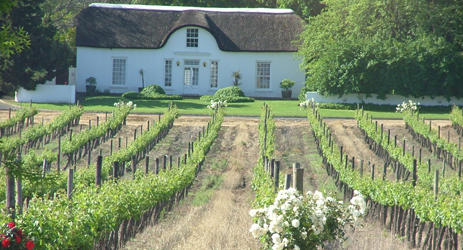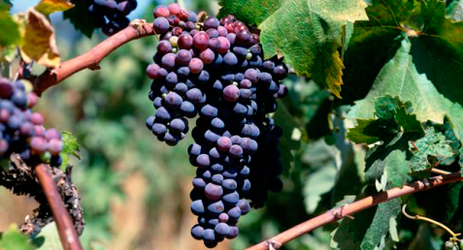Demei's View - Wine Communication from a Chinese Winemaker
I always need a good reason to travel. I decided a while ago that I won’t travel to places that don’t plant vines or make wines. For me, travel is for work rather than leisure.
South Africa produces wine, of course. I learned about it for the first time from my winemaking courses many years ago. But what makes South Africa special is the fact that while the rest of the wine world was introducing European varieties to their vineyards, the diligent viticultural technicians in South Africa cultivated the country’s own unique variety, Pinotage, after years of research.

They not only withstood the pressures of innovation, but also managed to make the variety known to the world, so that consumers today have the pleasure of enjoying the beauty of this invention.
Their efforts deserve respect from their peers.
Local wine industry practitioners would proudly tell you that the wine industry of South Africa dates back to 350 years ago, making it the country with the longest viticultural history among all New World countries.
With the rise of international navigation and trade, European voyagers developed the maritime trade route which passes Cape of Good Hope - the southern tip of Africa - and heads towards Asia for perfume and silk.

One of the supply depots on the trade route was built in Cape Town. In the year of 1654, Jan V Riebeeck brought vines into the country and, in doing so, marked the beginning of South African viticulture. Ships coming back from Asia also brought many other plants, some of which are now widely planted throughout South Africa.
At the beginning of the year of horse, I set off for a trip to the Babylonstoren winery in Western Cape, South Africa, and joined a group of 7 Chinese people. We are all from different backgrounds including wine, catering and media.
This was a refreshingly interesting trip, as we were only given the times and dates of events we had to attend; no detailed plans was set for every day of our visit. The freedom to arrange our own visit plans made this trip felt more like a vacation than work.
The Babylonstoren, as we realised during our trip, was built in 1652, and is the best-preserved Cape Dutch-style manor so far. Vines have been planted here early since the end of 17th century. Today the Babylonstoren remains as a labour-concentrated farm, with 51 out of its 360-hectare lands planted with vines. A modern winery with 3,000hl capacity was built for these vines, in addition to a five-star hotel, a garden spa, specialised restaurants and shops selling products made within the estate.
On arrival we were immediately attracted to the vegetable garden surrounding the restaurant and the hotel. It is built by French designer Patrice Taravella, who was inspired by the vegetable garden of the Dutch East India Company. Around 300 varieties of vegetable and fruit can be found here, demonstrating the food plants imported by European settlers for their own survival on these lands. They are planted organically, and all of them can be used in food or medicine.
What surprised me most were the 160 Chinese varieties brought back by the European armadas: those apples, quinces, peaches, nectarines and persimmons in the garden are actually descendent of their Chinese ancestors back in the 17th century.
As we wandered in the garden (we were given the permission to pick and taste as we like), we kept on spotting familiar plants, and couldn’t stop talking to the gardeners about how these plants were usually cooked in China. As someone who studied horticulture as a profession, I couldn’t supress my curiosity either—some of these varieties perhaps don’t exist in China anymore! Compared to over visitor groups, we stayed the longest during these themed visits, according to our guide.

In the restaurant, the cook treated us to food with beautiful colour, aroma and flavour. These dishes were both familiar and strange to us—as they were made using materials we know very well, but were cooked in an unfamiliar way. With the gourmets from the restaurant giving us more context about each dish, we spent a very long time in the restaurant—more than any of my other overseas trips.
Throughout the trip we just couldn’t take our mind off the veggie garden. Chinese people who managed to settle abroad would usually plant something when they can afford some land. But what we found here, in this South African garden, were genuine Chinese vegetables! Every day during my stay I would take a walk in the garden and pick some vegetables that I fancy to eat. The nutritionist in our group would even pick fresh fruit every morning, blend it into a smoothie and share it with everyone.
It doesn’t seem like a wine-related trip at all, does it? However, as we casually experienced the environment surrounding the production of wine, we were able to study the local wines from a more relaxed and friendly manner. Perhaps not everyone would have managed to stay as passionate if we had simply opened our trip with lectures of the local viticulature and vinification…
It seems to me that promoting wine doesn’t necessarily have to start from wine itself. This is especially true for new consumers.
We were there just in time for the beginning of harvesting season in South Africa. The opportunity to pick some grapes is always attractive for tourists. Not just the members in my group who had never picked grapes before, but I myself was as excited as everybody else. As Chardonnay and Chenin Blanc were already harvested and red varieties such as Shiraz and Cabernet Sauvignon were not ready for picking yet, we were happily assigned to pick some Viognier.
From several formal and informal tastings during my stay, I wrote down a few wines that I remember the most. The unfished oak-aging Bordeaux varietal blend was certainly outstanding; however, as a winemaker, I was more interested in their volume-production wines.
Starting from their very first vintage, 2011, we tasted almost every wine the winery produced. Although there were variations among vintages, their chief winemaker Charl Coetzee had given all of their wines a consistent style which resembled the personality of the winemaker himself: youthful, vibrant and easy to understand.

Chenin Blanc, 2013
Youthful pale lemon colour, refreshing nose with standout green plum fruit flavour; vibrant and fresh palate. Suitable for drinking on its own.
This wine was served in our hotel room, and was refilled daily.
Viognier, 2013
Clear pale lemon colour; perfumed, floral nose with a hint of vanilla and smoke; sweet fruit flavours of ripe pineapple; harmonious and refreshing palate, medium body with a clean finish.
Chardonnay, 2011 and 2013
We all favoured the 2011 vintage, which was sold out already. The 2013 vintage was bottled only two weeks ago, and was still quiet and unnoticed like the ugly duckling.
Clean and clear in colour, with mineral and smoke flavours. Medium body, a bit astringent for a white wine, but has a long finish. Hopefully with some time the ugly duckling will gradually turn into a beautiful swan.
Babylonstoren, 2011
This is a blend of Cabernet Sauvignon, Merlot and Cabernet Franc. Stand-out cream and vanilla aromas with black current and prune to follow, plus a hint of capsicum. Medium body with smooth, soft, lively texture and some length.
Shiraz, 2011
Vibrant ruby-purple colour; perfumed, with distinct nose of smoke, coffee and fresh black fruit. Sweet palate, medium-to-full body, pronounced fruit with a good length.
Translated by Sylvia Wu / 吴嘉溦
All rights reserved by Future plc. No part of this publication may be reproduced, distributed or transmitted in any form or by any means without the prior written permission of Decanter.
Only Official Media Partners (see About us) of DecanterChina.com may republish part of the content from the site without prior permission under strict Terms & Conditions. Contact china@decanter.com to learn about how to become an Official Media Partner of DecanterChina.com.




Comments
Submit